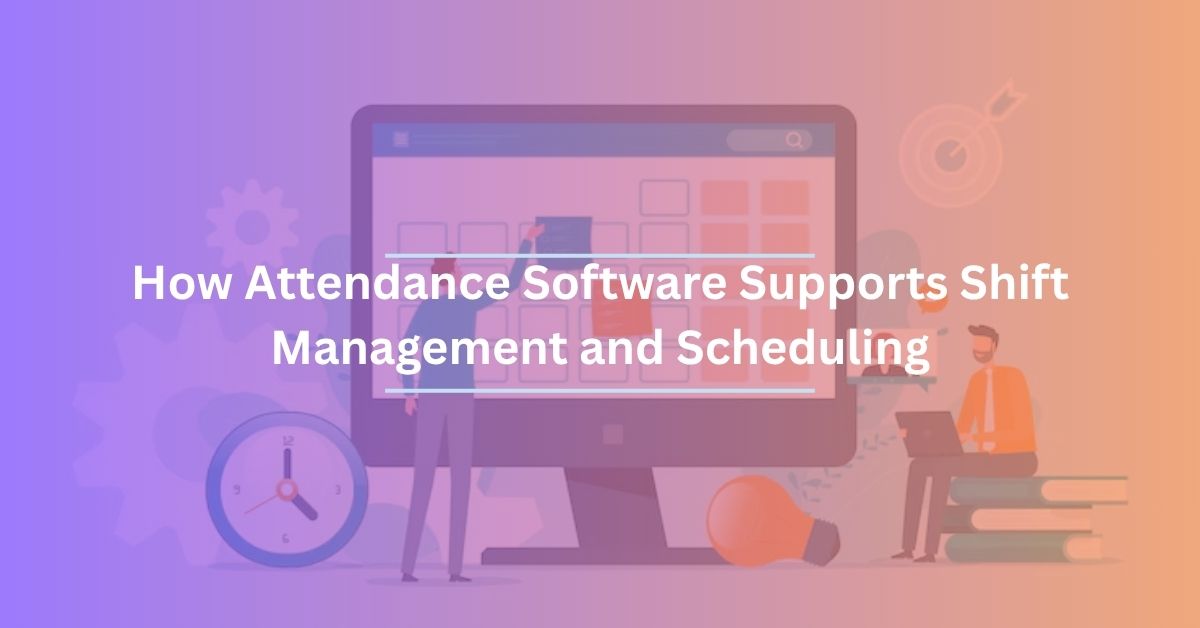Managing employee shifts and schedules can be one of the most complex tasks for HR teams, especially in businesses that run 24/7 operations or have large, diverse workforces. Mistakes in scheduling often lead to overstaffing, absenteeism, payroll errors, or even burnout. To solve these issues, more businesses are turning to modern attendance software to automate and streamline their shift management processes.
In this blog, we’ll explore how attendance software supports effective shift planning and scheduling, and why choosing the best attendance and payroll software In India can transform your HR operations.
The Growing Complexity of Shift-Based Work
Industries like manufacturing, retail, healthcare, hospitality, and customer service depend heavily on shift-based employees. HR and admin teams often spend hours manually assigning shifts, updating attendance records, and correcting scheduling mistakes.
This manual process not only wastes time but also leads to human error, conflict in shift timings, missed clock-ins, and inefficient resource utilization. With changing employee availability, sudden absences, and compliance requirements, the need for automation is now more crucial than ever.
How Attendance Software Simplifies Shift Scheduling
1. Real-Time Visibility of Workforce Availability
Attendance software offers real-time tracking of employee check-ins and check-outs, so HR managers know exactly who is available for which shift. You can view attendance logs, overtime hours, and absenteeism all in one dashboard.
This transparency allows for smarter shift allocation and ensures optimal staffing based on actual data—not assumptions.
2. Automated Shift Allocation
Modern attendance software can auto-assign shifts based on predefined rules such as employee skills, work hours, preferences, or past availability. This removes the need for spreadsheets or endless manual edits and ensures fair distribution of shifts.
The Best Attendance Management System in India even includes AI-assisted scheduling to optimize shift coverage while minimizing overtime and labor costs.
3. Customizable Shift Patterns
Whether you need fixed shifts, rotating shifts, or staggered start times, the software can be customized to suit your operational needs. You can set break times, lunch periods, and weekly offs to match local labor laws.
This level of flexibility makes it easier to manage remote, hybrid, or field-based employees too.
4. Notifications and Alerts
Last-minute shift changes? No problem. With real-time notifications, employees receive instant updates about their assigned shifts, reducing confusion and no-shows.
Managers can also receive alerts when employees are late, miss a shift, or work overtime, helping them take quick action.
Key Features to Look For
When choosing an attendance system for shift management, look for the following:
- Shift roster calendar
- Mobile attendance with geo-fencing
- Biometric or facial recognition integration
- Self-service portal for employees
- Payroll and leave management integration
- Analytics and reporting tools
An integrated platform like the best HR software In India combines these features with payroll, recruitment, and performance modules—giving you a complete HR solution under one roof.
Business Benefits of Smart Shift Scheduling
Improved Efficiency
Automated scheduling reduces the time HR spends on planning, allowing them to focus on strategic tasks. It also ensures accurate staffing for each shift, improving productivity.
Lower Payroll Errors
By syncing attendance and shift hours with payroll, the software ensures accurate pay calculations, overtime tracking, and compliance with labor laws.
Happier Employees
Employees appreciate fair, transparent scheduling. With mobile apps and self-service portals, they can view their schedules in advance, request changes, or swap shifts with approval—fostering flexibility and engagement.
Regulatory Compliance
Shift scheduling tools help organizations stay compliant with local laws around work hours, overtime limits, and mandatory breaks. The software keeps audit trails for future reference.
Real-World Example
Let’s say a retail chain has 10 locations and 150 employees working in rotating shifts. Before using attendance software, their HR team managed shifts manually through spreadsheets, which often led to scheduling conflicts and last-minute changes.
After adopting the Best Attendance Management System in India, they could automate all shift assignments, track attendance in real-time using geo-tagged mobile check-ins, and sync data with their payroll software. The result? Reduced absenteeism by 25%, fewer payroll disputes, and a 40% time saving for the HR team.
Why Integration Matters
Using a standalone attendance tool may solve shift scheduling issues—but an integrated HR solution can do much more. Platforms recognized as the Best HR Software in India offer full-scale modules that include:
- Attendance and shift scheduling
- Leave and payroll integration
- Employee self-service
- Real-time reporting and analytics
This all-in-one approach ensures that data flows smoothly across systems, reducing administrative effort and improving decision-making.
Conclusion
Attendance software is no longer just a digital punch-in tool—it’s a strategic asset for managing shift-based workforces. With features like automated scheduling, real-time tracking, mobile access, and rule-based assignment, it helps HR teams optimize shifts, reduce costs, and improve employee satisfaction.
To fully unlock these benefits, choose a solution that aligns with your company’s size and operational complexity. Whether you’re a small business or a multi-location enterprise, adopting the Best Attendance Management System in India or an integrated platform like the Best HR Software in India can take your workforce management to the next level.



